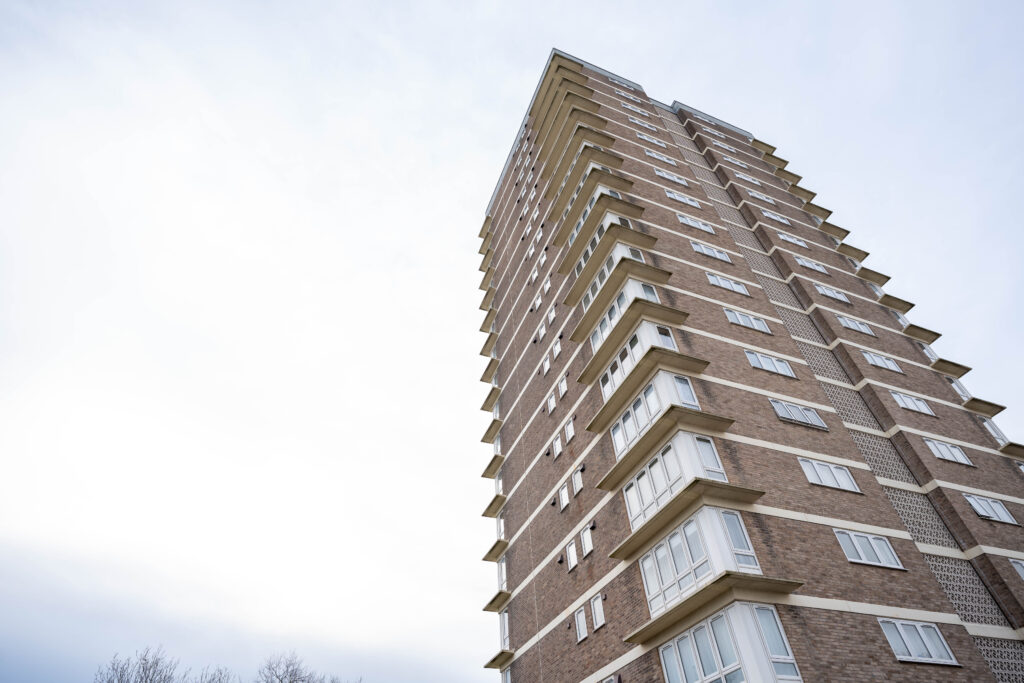A fire strategy document is a comprehensive plan that outlines the fire safety measures and procedures in a building to ensure the protection of occupants, property, and assets. It provides a detailed assessment of fire risks and specifies how these risks are mitigated through design, construction, and management practices. Typically, the document includes key elements such as evacuation plans, fire detection and alarm systems, compartmentation, fire suppression systems, and the roles and details of responsible persons. A fire strategy document serves as a vital reference for architects, building managers, and fire safety professionals, guiding both the design and ongoing management of fire safety in a building.

Legal Obligations in Residential Properties: Fire strategies are not explicitly stated as a legal requirement in all residential properties in the UK, but certain regulations make them necessary in specific cases, particularly in multi-occupancy or high-rise residential buildings. The laws governing fire safety in residential properties focus on ensuring that adequate fire safety measures are in place, which are often informed by a comprehensive fire strategy.
In residential buildings, the primary focus is on protecting occupants who may be unfamiliar with fire safety procedures or vulnerable, such as children, the elderly, or those with mobility challenges. Key considerations include:
Evacuation Plans:
Residential buildings often adopt a “stay-put” strategy for fire safety, particularly in high-rise apartments. This approach assumes effective compartmentation, where individual units are designed to contain fires and prevent their spread. For smaller residential buildings, a simultaneous evacuation plan is more common. Your evacuation plan will need to be specifically designed to meet the needs of your building.
Compartmentation:
Compartmentation is critical in residential properties, ensuring that fire is contained within a single flat or unit for a set period, typically 30-60 minutes. This design minimises risk to occupants and provides firefighters with time to respond.
Fire Detection and Alarm Systems:
Residential buildings prioritise individual smoke alarms within each unit and communal alarms in shared spaces. These systems need regular testing and maintenance to ensure reliability.
Escape Routes:
Fire strategies for residential buildings focus on clearly marked and easily accessible escape routes. High-rise buildings often include fire lifts and protected stairwells for evacuation.
Resident Education:
Residents must be informed of fire safety protocols, including how to evacuate, the location of fire extinguishers, and the importance of not obstructing escape routes.
In residential buildings, the responsibility for compiling a fire strategy largely depends on the type and ownership of the property. For blocks of flats and Houses in Multiple Occupation (HMOs), the responsible person—typically the building owner, landlord, or managing agent—is legally required to ensure fire safety measures are in place. Under the Regulatory Reform (Fire Safety) Order 2005, this includes conducting fire risk assessments and implementing appropriate safety measures. In high-rise residential buildings, the Fire Safety (England) Regulations 2022 add further obligations, such as maintaining a detailed fire strategy for the property, which must be shared with local fire and rescue services. For single-occupancy residential homes, the responsibility lies with the homeowner, although fire strategies are usually not required for individual houses.

The Regulatory Reform (Fire Safety) Order 2005 mandates that all non-domestic premises, including commercial buildings, must have adequate fire safety measures in place. While the law doesn’t explicitly use the term “fire strategy,” it requires the responsible person (e.g., employer, building owner, or occupier) to ensure fire safety by implementing measures that align with a comprehensive fire strategy.
Evacuation Plans:
Commercial buildings typically require a simultaneous evacuation plan due to the higher density of occupants and the lack of compartmentation. Buildings with large crowds, such as shopping centers, may also include phased evacuations to manage flow and prevent panic.
Fire Suppression Systems:
Fire suppression systems like sprinklers, gas-based systems, or water mist technology are often essential in commercial spaces to limit fire spread and minimise damage to valuable assets.
Fire Drills and Training:
Regular fire drills and staff training are integral to commercial fire strategies. Employees are often assigned specific roles, such as fire marshals, to ensure an organised evacuation.
Detection and Monitoring:
Commercial buildings often require advanced fire detection systems, such as addressable alarms that can pinpoint the location of a fire. These systems are usually monitored remotely for rapid response.
Regulatory Compliance:
Commercial properties are subject to strict fire safety regulations, which may include fire risk assessments, emergency lighting, and compliance with local codes. These requirements can vary by industry, such as hospitality or manufacturing.
In commercial buildings, the responsible person, as defined by the Regulatory Reform (Fire Safety) Order 2005, is accountable for compiling and maintaining the fire strategy. This could be the employer, building owner, facilities manager, or any individual with control over the premises. The responsible person must ensure the fire strategy addresses all fire safety measures, including evacuation plans, fire detection systems, and ongoing risk assessments. For more complex buildings, such as shopping centres or office towers, a fire safety consultant or expert is often engaged to assist in developing a comprehensive fire strategy. The responsible person must ensure the strategy is kept up to date, particularly when the building layout, usage, or occupancy changes, to remain compliant with legal obligations and protect all occupants.

While residential and commercial buildings differ in their fire safety needs, they share the overarching goal of protecting lives and property. A well-crafted fire strategy takes into account the specific risks and challenges associated with each type of building.
By understanding these differences, building managers, property owners, and fire safety professionals can create tailored solutions that meet legal requirements and prioritise safety. Whether it’s ensuring robust compartmentation in a residential high-rise or implementing comprehensive training for office staff, the right fire strategy makes all the difference.
©2024 Firntec LTD. England. Company Number 13460282.
